For the 2025 school year, there are 2 public elementary schools serving 598 students in Step Charter School District. This district's average elementary testing ranking is 8/10, which is in the top 30% of public elementary schools in Texas.
Public Elementary Schools in Step Charter School District have an average math proficiency score of 50% (versus the Texas public elementary school average of 42%), and reading proficiency score of 55% (versus the 52% statewide average).
Minority enrollment is 98% of the student body (majority Hispanic), which is more than the Texas public elementary school average of 75% (majority Hispanic).
Overview
This School District
This State (TX)
# Schools
2 Schools
6,902 Schools
# Students
598 Students
3,737,053 Students
# Teachers
39 Teachers
255,471 Teachers
Student : Teacher Ratio
15:1
15:1
District Rank
Step Charter School District, which is ranked #332 of all 1,196 school districts in Texas (based off of combined math and reading proficiency testing data) for the 2021-2022 school year.
Overall District Rank
#325 out of 1204 school districts
(Top 30%)
(Top 30%)
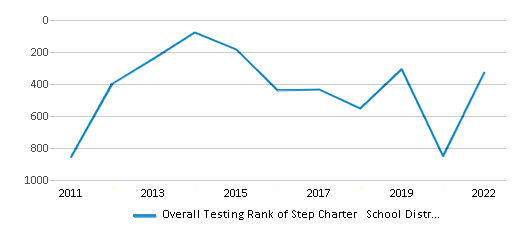
Math Test Scores (% Proficient)
50%
41%
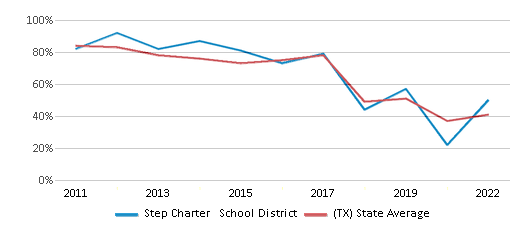
Reading/Language Arts Test Scores (% Proficient)
56%
51%

Science Test Scores (% Proficient)
30-34%
46%
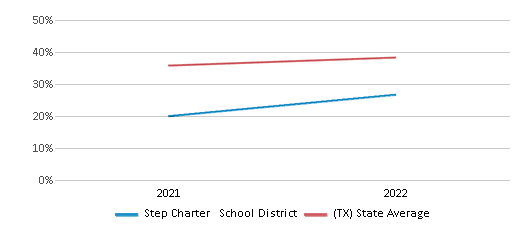
Students by Ethnicity:
Diversity Score
0.47
0.64
# American Indian Students
4 Students
11,705 Students
% American Indian Students
1%
n/a
# Asian Students
54 Students
203,767 Students
% Asian Students
9%
6%
# Hispanic Students
420 Students
1,997,454 Students
% Hispanic Students
70%
53%
# Black Students
105 Students
469,194 Students
% Black Students
17%
13%
# White Students
11 Students
924,841 Students
% White Students
2%
25%
# Hawaiian Students
n/a
5,879 Students
% Hawaiian Students
n/a
n/a
# Two or more races Students
4 Students
124,213 Students
% of Two or more races Students
1%
3%
Students by Grade:
# Students in PK Grade:
-
222,501
# Students in K Grade:
69
346,866
# Students in 1st Grade:
74
385,427
# Students in 2nd Grade:
76
402,148
# Students in 3rd Grade:
65
399,623
# Students in 4th Grade:
68
398,690
# Students in 5th Grade:
80
399,071
# Students in 6th Grade:
71
402,143
# Students in 7th Grade:
54
335,034
# Students in 8th Grade:
41
339,814
# Students in 9th Grade:
-
32,833
# Students in 10th Grade:
-
28,116
# Students in 11th Grade:
-
23,862
# Students in 12th Grade:
-
20,925
# Ungraded Students:
-
-
District Revenue and Spending
The revenue/student of $13,156 in this school district is less than the state median of $13,387. The school district revenue/student has declined by 16% over four school years.
The school district's spending/student of $11,495 is less than the state median of $14,116. The school district spending/student has declined by 16% over four school years.
Total Revenue
$8 MM
$74,029 MM

Spending
$7 MM
$78,063 MM
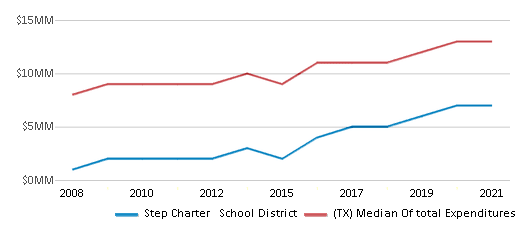
Revenue / Student
$13,156
$13,387
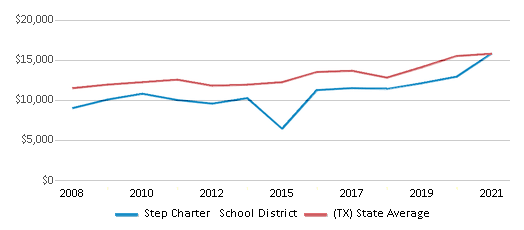
Spending / Student
$11,495
$14,116
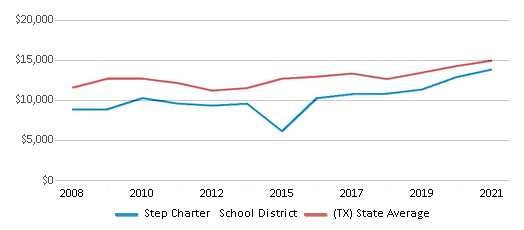
Best Step Charter School District Public Elementary Schools (2025)
School
(Math and Reading Proficiency)
(Math and Reading Proficiency)
Location
Grades
Students
Rank: #11.
Step Charter Elementary School
Charter School
(Math: 55-59% | Reading: 60-64%)
Rank:
Rank:
9/
Top 20%10
11250 S Wilcrest Dr
Houston, TX 77099
(281) 988-7797
Houston, TX 77099
(281) 988-7797
Grades: K-8
| 292 students
Rank: #22.
Step Charter Ii
Charter School
(Math: 40-44% | Reading: 45-49%)
Rank:
Rank:
6/
Top 50%10
8282 Bissonnet St
Houston, TX 77099
(281) 988-7797
Houston, TX 77099
(281) 988-7797
Grades: K-8
| 306 students
Recent Articles

Year-Round Or Traditional Schedule?
Which is more appropriate for your child? A year-round attendance schedule or traditional schedule? We look at the pros and cons.

Why You Should Encourage Your Child to Join a Sports Team
Participating in team sports has a great many benefits for children, there is no doubt. In this article you will learn what those benefits are.

White Students are Now the Minority in U.S. 九游体育s
Increasing birth rates among immigrant families from Asia and Central and South America, combined with lower birth rates among white families, means that for the first time in history, public school students in the United States are majority-minority. This shift in demographics poses difficulties for schools as they work to accommodate children of varying language abilities and socio-economic backgrounds.





